What kind of care does a beautiful sheffler need at home?
In the interior of official institutions - hospitals, reception rooms, offices - you can often see a plant with the original name "umbrella tree". I fell in love with the Scheffler, whose care is reduced to a minimum of activities, and the owners of indoor gardens. A tree or bush with a lush crown formed by large leaves, like palms with fingers apart, is equally decorative in winter and summer. When grown indoors, a flowering sheffler is a rarity, but it is beautiful even without buds, the attractiveness of which is questionable for many: when loose, they resemble tentacles.
Types and varieties
The culture leads its way to the home garden from the tropical rainforests of the Australian continent, Southeast Asia and the Pacific Islands. Her closest relatives are representatives of the Araliev family: ivy, eleutherococcus, ginseng. The wild sheffler species, of which there are about 200, are diverse. They are distinguished from each other by the size, shape, length and color of the leaves. Among them there are lianas, shrubs, huge (up to 20 m tall) trees. At home, about 10 cultivated flower forms are grown.
Most often, an indoor garden is decorated with the following types of sheffler.
- Eight-leaved (Schefflera octophylla). Its leaves are shiny leathery, elongated, lanceolate. They sharpen to the top, have a rounded base. Because of their shape, the people called this sheffler the octopus tree. The leaves are rough to the touch. In length they reach 30-40 cm, in width - 10 cm. The petioles are long, strongly drooping, milky-creamy. Each has 6 to 12 leaves attached. While young, their color is olive green with a bottle yellow tint. Over time, they turn into a rich malachite shade, against which paler veins become clearly visible. Below the leaf plate is matte, its color is dim, pale green.
- Finger (Schefflera digitata). Also known as Aralia schefflera. Found naturally in New Zealand. This is a tall (up to 3-6 m) tree with a leaf shape resembling a palm tree. Each of them is divided into 7-10 plates, the length of which is 15-35 cm. The leaves have the shape of a strongly elongated oval, pointed at the base and at the top. They are wide - up to 6 cm. Their surface is glossy, leathery, like parchment. The edges of young leaves are feathery; as they grow, rare teeth appear on them. They are located on a long (up to 20 cm) tubular petiole. The flowering finger-shaped shefflera produces umbellate inflorescences consisting of 4-8 buds. They are very small. In the open state, the diameter of the flower is about 0.6 cm. There are also variegated species of this sheffler.
- Arboreal (Schefflera arboricola). The trunk of the plant is erect, branching. The color of the shoots depends on their age. While they are young, it is green. Adult shoots become light brown in color. The tree-like variety of shefflers differs in the shape of the leaves: they are odd-pinnate. They reach 20 cm in length.Gold Capella (with juicy green leaves covered with small yellow spots), Gerda (with colorful lemon-green leaves resembling open rosettes), Amate (having increased resistance to diseases and pests and leaves of a juicy green color). A tree-like sheffler in a home garden can grow up to 1.2 m in height.
- Radiant (Schefflera actinophylla). Its second name is star-leaved. It is most often grown at home.Its trunk is dusty brown, powerful, straight, noticeably thickened at the base. The leaves are divided into 14-16 lobes. At first they are ovoid, then they become oval-elongated, pointed towards the apex. Their average length is 15 cm, width is 5 cm. At the edges they are slightly wavy, attached to long petioles of a red-brown hue. The color of the leaves depends on the type of plant. In some species, they are shiny and deep green, in others they are mustard (Green Gold) or olive yellow, jagged, similar to oak (Nova). In the middle part, the lobes are wide; they may even touch the adjacent edges. The veins on the leaves are lighter in color, they are clearly visible. An indoor flower can reach a height of 3 m.
All types of shefflers are unpretentious. Caring for them will not seem difficult even for inexperienced growers.
Lighting and temperature
Sheffler needs a lot of light. The best place for her is a window sill located on the east or west side of the house. Plants with solid leaves will be comfortable on northern windows as well. If they are covered with fancy patterns of white and yellow (Gerda, Hong Kong, Gold Capella, Sofia, Janine), the patterns on them will fade due to insufficient lighting.
Scheffler south windows do not fit. The flower will be too hot and sunny on them. It is better to place the tree on a well-lit table, moving it to the window. The plant patiently tolerates unfavorable conditions, but for a long time in the sun the sheffler does not withstand - its leaves turn yellow and become covered with burns. Therefore, it is recommended to hide it from the heat under a light curtain.
You can put the sheffler in partial shade. But it is not worth placing it in the back of the room, at a considerable distance from the light source, otherwise, instead of a spectacular tall tree, a stunted misunderstanding with rare leaves will grow. In winter, this indoor flower needs additional lighting. This is especially important when kept warm (above 17 ° C).
Advice
In the warm season, the shefflera pot can be taken outside: on the terrace, balcony or in the garden. The main thing is to shelter it from the bright sun and protect it from wind and draft.
Despite its tropical origin, the plant does not like the heat. The preferred temperature for it is in the range of 17-22 ° C in summer and at least 12 ° C in winter. Shefflera reacts sharply to overheating, shedding leaves from itself. For this reason, window sills, under which the battery is located, and corners near heaters are poor options for placing it. The leaves of the flower also fall off due to drafts and sudden temperature fluctuations.
Watering and humidity
This houseplant loves a humid atmosphere, but does not tolerate stagnant water in a pot. Those whose home garden adorns the Schlumberger Trunkata (better known as the Decembrist) will find his demands familiar. During the period of active growth, the sheffler needs frequent (with an interval of 2-3 days), but moderate watering. It is impossible to allow the soil to dry out. It should always remain slightly damp. But with a short-term drought, the Scheffler is easier to cope with than with constant dampness, because of which the soil sours, and the roots of the tree begin to rot. Waterlogging is indicated by blackening and flying around the leaves. Such problems will not arise if the sheffler is grown hydroponically.
When the flower is at rest, watering is reduced to 1 procedure every 7-10 days. It is important to follow this rule if the plant is kept at a low temperature in winter. Schefflers defend water for irrigation. Distilled or boiled will also work. Its temperature should be room temperature or above room temperature by 2-3 ° C.
High humidity is the key to the full development of shefflers. On hot days, the tree is sprayed daily, using soft water for the procedures, otherwise, after it dries, white spots will remain on the leaves. This indoor plant is cleaned of dust with a damp sponge or a warm shower is arranged for it.In winter, a favorable microclimate for the shefflers is created by filling the pan of the pot with wet expanded clay. You can replace it with pebbles or moss. At the same time, the roots of the flower should not come into contact with water. If it is warm in the room in winter (more than 17 ° C), they do not stop spraying the plant.
Propagation by stem cuttings
Sheffler flower growers who are not familiar with breeding are interested in how the tree reproduces. You can grow it in different ways:
- from seeds;
- from the cutting;
- from the air layer.
Most often, flower propagation is carried out by cuttings. Having chosen the most developed semi-lignified shoot on an adult sheffler, it is cut off with a sharp knife and divided into parts. Each cutting should have 2 internodes. Then the shoots are dipped in a solution of a root growth stimulator (Heteroauxin) for 6-8 hours. It is advisable to stock up on Kornevin. In it, the cuttings are dipped before planting.
They are rooted in separate containers in a mixture of peat and sand. To prepare the substrate, both components are taken in equal volumes. The container with the planted cuttings is placed under a plastic bag. For them to take root, it is necessary to provide them with two conditions:
- warm (about 22 ° C);
- bright but diffused lighting.
It is easy to take care of the sheffler cuttings at this stage. You just need to periodically moisten the soil from the sprayer and ventilate the greenhouse by briefly removing the bag. When the cuttings are rooted, the temperature is reduced to 18-20 ° C, and the shelter is removed. Plants are left in planting containers until their roots completely encircle the soil ball. Then they are transferred to larger pots. Until they take root in a new place, the temperature should not rise above 14-16 ° C.
Alternative breeding methods
Sheffler seeds are almost impossible to obtain at home, so you will have to purchase them at the store. They are sown early - in January-February. To increase germination, the seeds are pretreated with a growth stimulant (Epin, Zircon).
The planting container is filled with peat mixed with sand, or a substrate of the following components:
- turf land;
- leafy land;
- sand.
The recommended planting depth is 3 seed diameters. After sowing, the container is placed under glass or tightened with a film. Sheffler seeds germinate at 20-24 ° C. Crop care is reduced to daily ventilation and soil moistening as needed.
Advice
It will be easier to propagate the flower in a generative way if you heat the container with the planted seeds from below. This way the sheffler sprouts will appear faster.
When the seedlings release 2-3 true leaves, they are dived into separate pots. They should not be large - 7 to 9 cm in diameter. The unpicked shefflers need coolness. The temperature in the room with them is maintained at the level of 14-16 ° C. Closer to autumn, they are transplanted again using pots, the diameter of which is 10-12 cm. They need a substrate almost the same as crops. Only the proportions change: the components are mixed in a 2: 1: 1 ratio.
To propagate an adult sheffler with an air layer, a vertical incision is made on its trunk. Sphagnum moss soaked in nutrient solution is applied to it. It is prepared from a complex fertilizer or immunomodulatory drugs. 1 g of the substance is added to 1 liter of water. Having pressed the moss to the trunk of the shefflers, it is tightly wrapped with film on top. Constant humidity must be maintained under it, this must be carefully monitored.
Roots will soon appear at the incision site. When they grow up (this will take about 2 months), the flower is cut off and planted in a pot. Throwing out the old sheffler is not worth it. It is cut off, leaving a low stump. If the plant is watered, over time, it will release young shoots.
Top dressing and transplanting
During the period of intensive growth (March-August), the sheffler needs care in the form of dressings. It is carried out every 1.5-2 weeks. Complex mineral compositions intended for decorative deciduous crops are suitable for the flower.It is advisable to alternate liquid feeding of shefflers with the introduction of organic matter. The plant responds well to crushed eggshells. 1 tbsp. l substances are scattered over the surface of the soil in a pot. In winter, this indoor flower is not fed.
Young shefflers require an annual transplant. For adult trees, the pot is changed less often - once every 2-3 years, when their roots become cramped in the old. To adhere to such a transplantation scheme, every spring the top layer of the earth (to a depth of 5 cm) is changed to a fresh one. The new container should be much larger than the previous one in diameter - by 5-6 cm. The best time for transplanting is spring.
The bottom of the pot is covered with a thick drainage layer. Sheffler's soil loves light, loose, high in nutrients. From ready-made substrates, it is suitable for palm soil or universal.
If the soil mixture for the plant is made independently, the following components are taken for it:
- compost soil (3 parts);
- peat (1 part);
- coarse sand (1.5 parts).
The transplant is carried out by transferring the flower from the pot to the pot and trying not to destroy the earthen lump. The voids are filled with soil, crushing it. Finish the transplant with watering.
Pruning
If shefflera decorates a room flower garden, she is given the shape of a tree or bush. In the first case, it will look spectacular next to Benjamin's ficus. In the second, Schlumberger Trunkata will become a successful neighbor for a flower. Young sheffler has thin stems. In order to get a beautiful powerful tree in the future, they are tied to a support.
Whether a flower needs pruning depends on the variety. Radiant plant varieties with only one stem do not need it. If the shefflera is woody, the goal of such care is to save space. When the flower grows strongly, the tops of its shoots can be cut off. This stimulates their branching.
The decorativeness of the plant suffers from pruning, so many sheffler owners do without it. To make the flower bushy and lush, 2-3 trees are placed in one pot. Leaves that interfere with each other do not touch, letting them dry out. When this happens, they are pruned. A sharp knife is used for it, the blade of which is disinfected with alcohol, potassium permanganate solution or hardening. This will protect the houseplant from infection entering the wound.
Advice
Getting on the skin and mucous membranes, sheffler juice can cause irritation. Therefore, pruning it requires caution. It is recommended to carry it out with rubber gloves.
Change color and leaves fall
Improper care can reduce the decorative effect of the sheffler and even destroy it. An indicator of a tree's well-being is its appearance. By yellowing the leaves, the plant speaks of an overabundance of sunlight. In this case, the flower must be removed from the windowsill or shaded. Insufficient soil and air moisture is the main reason for blackening of shefflera leaves at home. It starts from their tips. If you normalize watering and increase the frequency of spraying, the tree will gradually restore its former beauty.
The leaves of the flower fall due to pests or unfavorable conditions for it:
- prolonged hypothermia (if the room temperature is below 14 ° C) or overheating (at 30 ° C);
- chronic waterlogging, which resulted in shefflera roots rotting;
- insufficient lighting (more often plant species with variegated leaves react to it this way).
Having discovered that the roots of the shefflers are rotting, it is urgent to save the tree. It is removed from the pot. The roots are carefully examined, cutting off the diseased areas. Then they are immersed in a solution of a growth stimulator (Epin, Zircon). The next step is to disinfect the shefflera roots. For it, you can use Fitosporin or crushed coal. After processing the roots, the plant is planted in a fresh, slightly moistened soil mixture. The pot is placed under a plastic bag. Sheffler is kept in such a greenhouse for 5-7 days. Periodically, the bag is removed to ventilate and water the flower.
Insects are dangerous for the tree:
- scabbards;
- thrips;
- aphid;
- spider mites.
Due to their invasion, the development of shefflers slows down, the leaves turn yellow on the flower, and then the leaves fall. If you do not control pests, the plant will wither. It is easier to get rid of them in the initial stages of defeat. The discovered insects are carefully removed from the leaves and stems with a sponge, cloth or cotton swab soaked in soapy water.
If the pests on the sheffler have formed a whole colony, you will have to use insecticides. Aktellik, Fitoverm and Karbofos have proven themselves well. You should work with them carefully, observing safety rules and making sure that the drug solution does not get into the soil. If necessary, re-treatment is carried out after 2 weeks.
Schefflera is a truly versatile houseplant. It will subtly shade the beauty of other flowers in the home garden, but even in a single planting, it will delight the eye with its lush bright crown, creating an atmosphere of warmth and comfort. Taking care of the tree is easy. It is worth providing the sheffler with good lighting and constant humidity, and she will thank you for her care, quickly turning into a tall, spectacular flower.
Indoor plant lovers who believe in signs will find many reasons to bring this guest from the tropics. In feng shui, a well-developed sheffler in the house speaks of material well-being and mental balance. This plant, like a sponge, absorbs negative energy. Being close to him relieves anxiety, fears and sad thoughts, calming, invigorating and bringing a feeling of peace and harmony. If you put the shefflera pot in the bedroom, you don't have to worry about nightmares and insomnia. Its placement in an office or study room will be successful - esotericism attributes to a tree the ability to facilitate and improve the assimilation of knowledge.
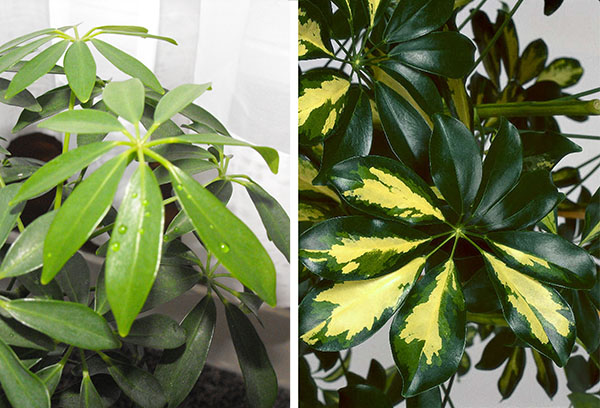
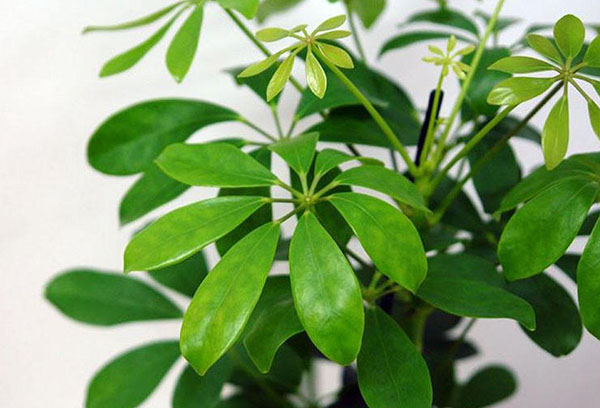
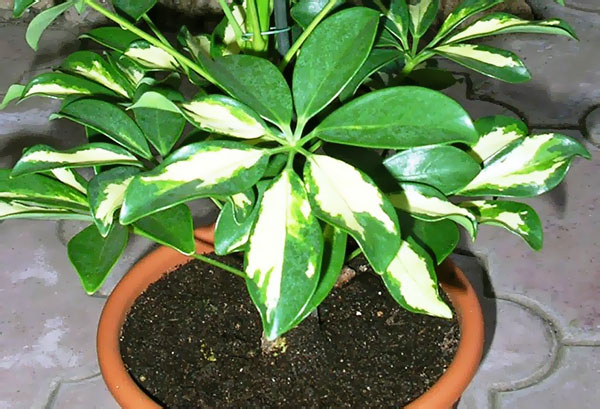
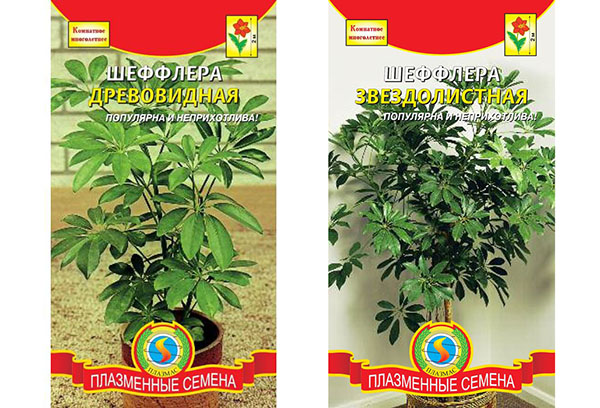
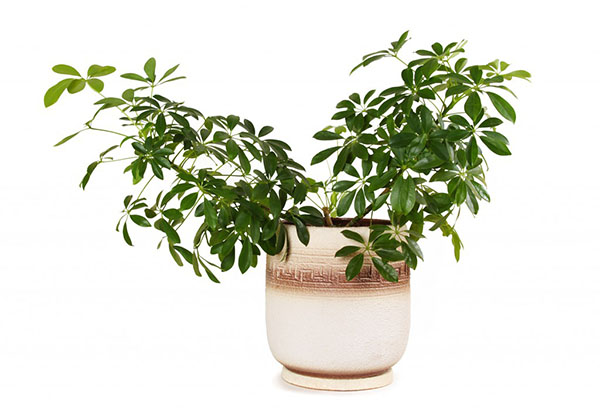
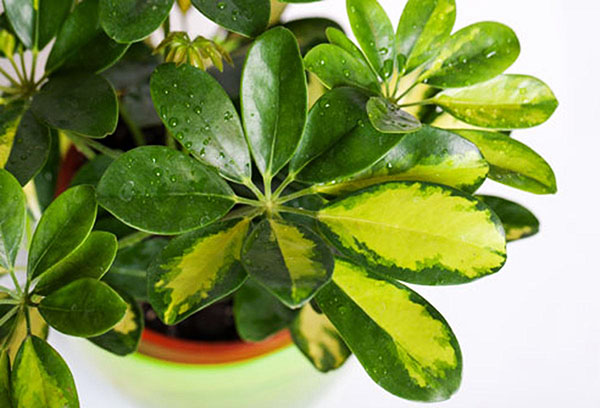
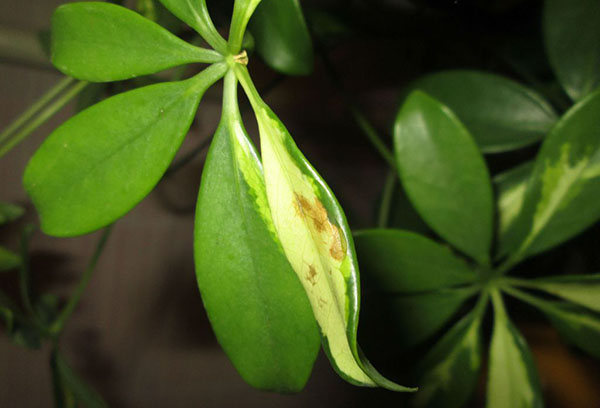
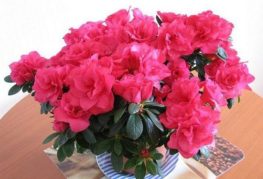

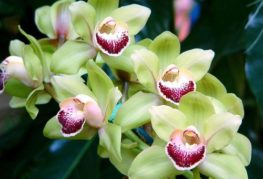
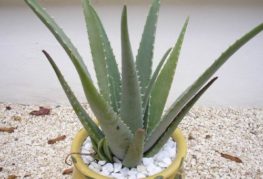
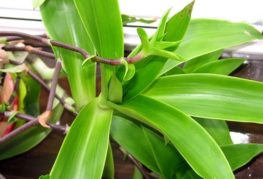
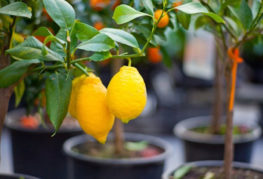
and will be published shortly.